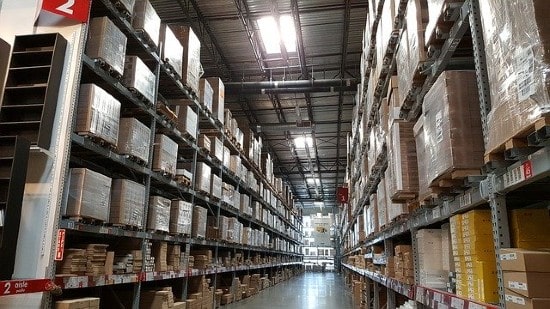Activity in the Dublin industrial & logistics sector has increased in recent weeks as a result of the Covid-19 crisis, according to the latest report, Dublin Industrial & Logistics Market View, by CBRE Ireland.
According to CBRE, 86,657m2 of take-up was recorded in the Dublin industrial & logistics sector during the first quarter of 2020. Boosted by several large leasing transactions, this represents a healthy volume of take-up which is 17% higher than the 5-year average Q1 take-up despite being 9% lower than the volume of activity recorded in Q1 2019.
Transactional activity in the industrial & logistics sector during Q1 2020 was primarily focused on the Dublin North West (N3) and Dublin South West (N7) corridors, which respectively accounted for 42% and 41% of sales and lettings completed in the Dublin market in Q1. Meanwhile, 8% of industrial take-up in the first quarter of the year occurred along the Dublin North East (M1) corridor while 7% of Q1 take-up occurred along the Dublin North (M2) corridor.
In total, there were 36 individual industrial transactions signed in Dublin in Q1 2020. 89% of the total volume of industrial take-up recorded during the first three months of the year comprised lettings (24 transactions) with the remaining 12 of the 36 transactions or 11% of take-up signed in the period comprising sales. Prime industrial rents in the capital remained steady quarter-on-quarter, standing at €110 per square metre (€10.25 per sq. ft.) at the end of Q1 2020.

READ ALSO : Commercial property investment in Ireland hits £2.4bn
Many transactions are proceeding in this sector, but with the country on shutdown due to Covid-19, it is expected that some industrial & logistics requirements as well as a few larger land transactions will be put on hold in the short-term. This will result in lower volumes of transactional activity in this sector during Q2. CBRE also expect to see the completion dates of new projects being pushed out by at least three months now that the development pipeline has been curtailed due to sites being closed.
“The market experienced a spike in short-term requirements for logistics and cold storage facilities from the grocery and pharmaceutical sectors over recent weeks.”
“The market experienced a spike in short-term requirements for logistics and cold storage facilities from the grocery and pharmaceutical sectors over recent weeks. Indeed, despite the uncertainty that has prevailed in recent weeks due to the Coronavirus pandemic, which like in other sectors has seen some transactions being put on hold, the overall volume of demand in the industrial and logistics sector in the capital rose quarter-on-quarter. In total, there was demand for more than 135,000m2 of industrial accommodation prevailing at the end of Q1 2020, up from approximately 126,000m2 last quarter. Within the data centre sector, internet and remote working providers have also seen a spike in activity. This has increased the utilisation rates within most data centres, which will in turn result in increased demand for cloud-based services,” said Garrett McClean,Executive Director, Industrial & Logistics.
During Q1, 57% of transactional activity in the Dublin industrial and logistics sector was in buildings extending to more than 9,290m2 (100,000 sq. ft.) in size. Meanwhile, a further 18% of industrial take-up in the capital in Q4 comprised transactions that extended to between 1,858m2 and 4,645m2 (20,000 – 50,000 sq. ft.). There were 8 industrial investments of more than €1 million completed in the Irish market during the last quarter of 2019, totalling almost €35 million between them with this sector accounting for 3% of total investment in the Irish market in Q1.
According to CBRE’s latest research, prime industrial yields in the capital remained steady at 5.0% at the end of Q1 2020, having compressed by 10 basis points quarter-on-quarter.





















